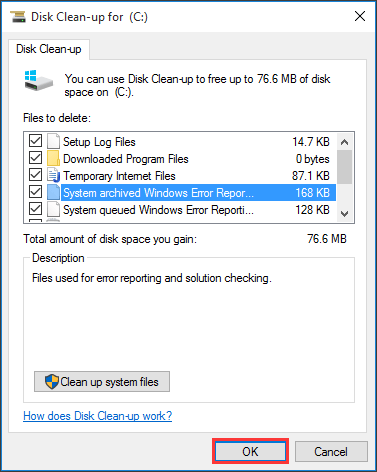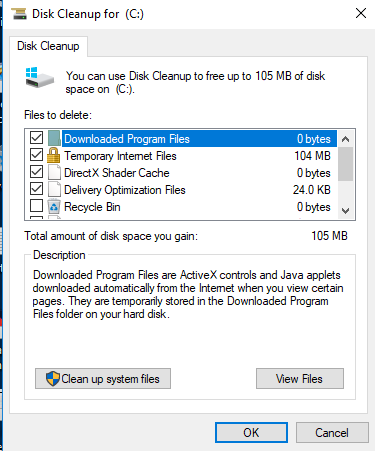

However, I don’t how much have been improved in Windows 10’s Settings > Storage > Temporary Files because cleaning up clusters there seems to be much faster. If so, it compresses the uncompressed system files and that uses a lot of CPU times. Second, it checks the system and sees whether it would benefit from compression of system files. So why does it take that long for a task that basically just deleting files? Now, we have a answer from The Old New Thing who offers a bit insight as to why.īasically, the Disk Cleanup’s Windows Update Cleanup does two things.įirst, it does the equivalent of dism /Online /Cleanup-Image /StartComponentCleanup, a deep clean that scavenges the component catalog looking for components that are no longer being referenced and deletes them immediately. In the old days where Windows 7 still dominates, cleaning up system files would also result in a very long restart time as well.

If you have done it via Disk Cleanup Tool’s Clean up system files before, you may find that it takes a long time to finish and consumes a lot of CPU power. The longer you run with your windows, probably the larger amount of legacy updates you collected.įrom time to time, we do some house cleaning work to clean up the clutter. But all update files are accumulated in the system folder, occupying disk space for no obvious benefit other than reverting back in case something goes wrong. It is the simplest way to keep your system secure and up-to-date. On the Windows Taskbar, click on the Search button and search for Disk Cleanup.Windows Update is a must-have. Before I blabber on about the Disk Cleanup Utility, let’s dive into how to use it to clean your Windows PC. It is a good idea to perform a Cleanup operation regularly to free up needed space and keep your computer running smoothly. However, there will be a small increase in performance if you keep your Windows clean. As much as I would like to tell you that a clean Windows runs twice as fast, the truth is that cleaning junk from your computer has more to do with good housekeeping than speed. The debate on whether cleaning your Windows improves performance rages on. In this article, I will show you how to efficiently use the built-in Windows Disk Cleanup Utility to clean your PC from junk. Choose a Wiping Type to determine what to clean, select Wipe disk here and click Next to proceed. Backup important files if necessary, then navigate to Tools tab and choose Disk Wipe. When these tasks are complete, these files become redundant. How to clean a hard drive in Windows 11/10/8/7 securely: 1. For Example, temporary files, as the name suggests are files that are temporarily created for use with certain tasks. Windows can quickly fill up with junk files.


 0 kommentar(er)
0 kommentar(er)
